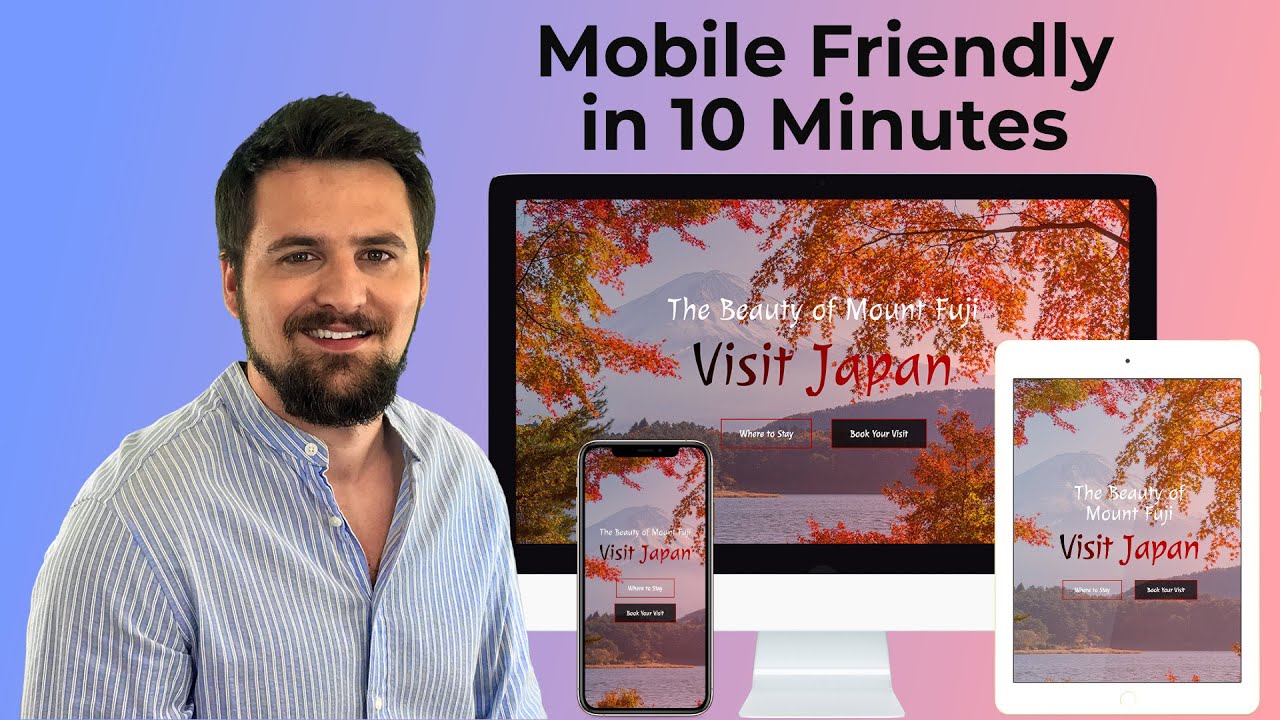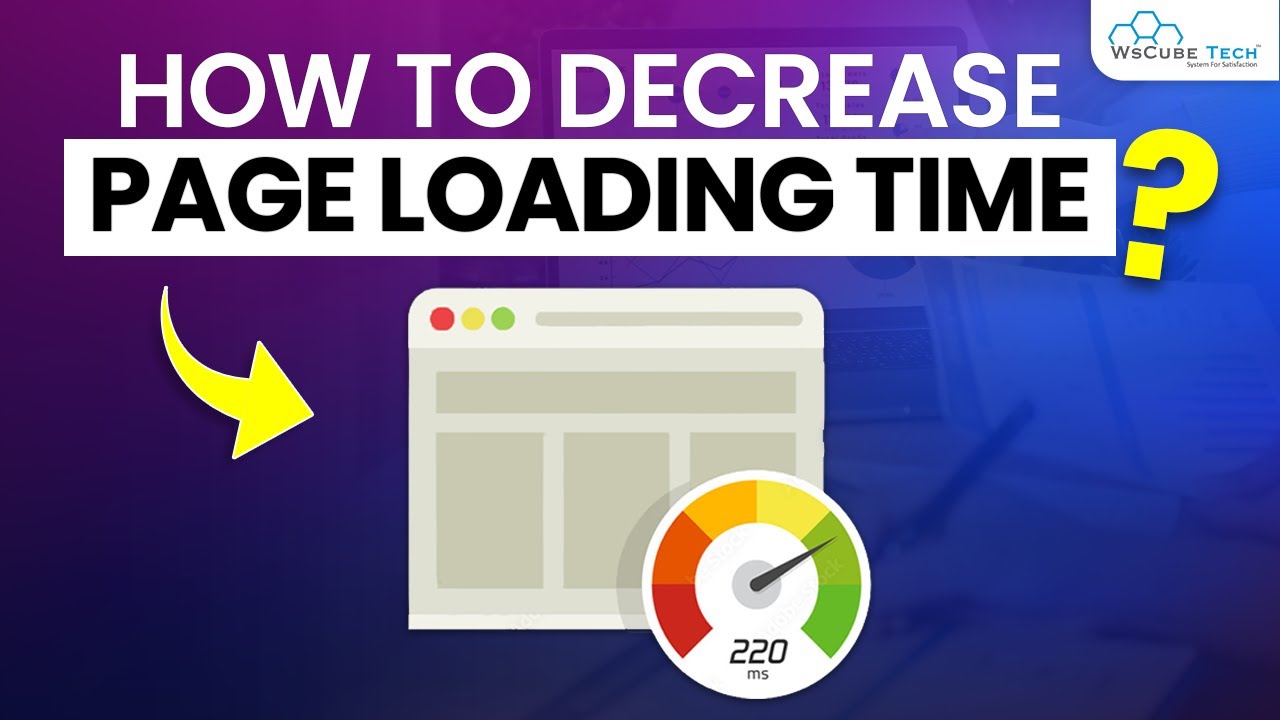In today's competitive digital landscape, small businesses face the challenge of establishing a strong online presence to attract potential customers and thrive in their respective industries. To achieve this, embracing the power of small business SEO improve rankingsis crucial. By implementing effective SEOstrategies, small businesses can enhance their visibility on search engineresults pages (SERPs), drive organic traffic, and gain a competitive edge in the digital marketplace.
Keyword Research

Keyword Research Tutorial: From Start to Finish
Keyword research is a fundamental process in search engine optimization(SEO) that involves identifying and analyzing relevant keywords and phrases that users are likely to use when searching for products, services, or information online. It is the foundation of any successful SEO strategyand plays a crucial role in improving a website's visibility on search engine results pages (SERPs).
The goal of keyword research is to find keywords with a balance of high search volume and low competition. By incorporating these targeted keywords strategically into website content, meta tags, and other on-page elements, businesses can improve their chances of ranking higher in search engine results, thus attracting more organic traffic and potential customers.
Keyword research is not a one-time activity; it requires continuous monitoring and adaptation to stay current with changes in user search behavior, industry trends, and search engine algorithms. Tools like Google Keyword Planner, SEMrush, Ahrefs, and others are commonly used to conduct keyword research and discover valuable keywords that align with a business's objectives and target audience.
On-Page Optimization

On-Page SEO Pt 2: How to Optimize a Page for a Keyword - 2.2. SEO Course by Ahrefs
On-page optimization is a critical aspect of search engine optimization (SEO) that focuses on optimizing individual web pages to improve their visibility and relevance for specific target keywords. By implementing on-page SEO techniques, businesses can send positive signals to search engines, enhancing their chances of ranking higher in search results and attracting organic traffic. Key components of on-page optimization include:
- Keyword Usage - Incorporating target keywords naturally and strategically within the page's content, headings, meta tags, and URLs. However, it is essential to avoid keyword stuffing, which can lead to penalties from search engines.
- Title Tags-Creating unique and descriptive title tags for each page, including the target keyword, to provide search engines and users with a clear understanding of the page's content.
- Meta Descriptions-Crafting compelling meta descriptionsthat summarize the page's content and encourage users to click on the link when it appears in search results.
- Headings (H1, H2, H3, etc.) -Organizing content with proper headings and subheadings to create a logical structure for both users and search engines. Using keywords in headings can also signal the page's topic.
- URL Structure -Creating concise and descriptive URLs that contain relevant keywords to improve user experienceand search engine readability.
- Image Optimization -Optimizing images by using descriptive alt text and appropriate file names, as search engines cannot interpret images directly.
- Internal Linking -Creating relevant internal links within the website to help search engines understand the site's structure and navigate between related content.
- User Experience (UX) -Ensuring that the page offers a positive user experience by providing valuable content, easy navigation, and fast loading times.
- Mobile-Friendliness -Ensuring that the page is responsive and displays well on various devices, including smartphones and tablets.
- Schema Markup-Implementing structured data or schema markup to provide additional context to search engines and enhance the page's appearance in rich snippets on SERPs.
Quality Content

How to Write High-Quality Content Optimized to Rank
Quality content is a cornerstone of successful search engine optimization (SEO) and a critical factor in driving organic traffic to a website. In the digital age, where competition for online attention is fierce, creating valuable, informative, and engaging content is essential for businesses to stand out and connect with their target audience. Here are key aspects of quality content and why it matters in SEO:
- Relevance -Quality content is highly relevant to the target audience and addresses their needs, questions, or pain points. By understanding the interests and preferences of their audience, businesses can create content that resonates and adds value.
- Information and Authority -Well-researched content demonstrates expertise and authority in a particular industry or niche. Authoritative content builds trust with users and establishes the businessas a reliable source of information, which can lead to increased brand loyalty.
- Originality -Creating original content sets a business apart from competitors and helps avoid duplicate content issues, which can negatively affect SEO rankings. Original content is more likely to be shared and linked to by other websites, further enhancing its SEO value.
- Readability and User Experience -Quality content is easy to read and understand. It uses clear language, proper formatting, and relevant visuals to enhance the user experience. A positive user experience signals search engines that the content is valuable, which can positively impact rankings.
- Engagement and Shareability- Content that engages users and sparks emotions is more likely to be shared on social mediaand other platforms. Social shares and backlinksfrom reputable sources can boost a page's authority and contribute to higher search rankings.
- Long-Form vs. Short-Form Content -Both long-form and short-form content can be valuable, depending on the topic and audience. Long-form content allows businesses to delve deep into a subject and demonstrate expertise, while short-form content is concise and ideal for quick consumption.
- Regular Updates -Regularly updating and refreshing content shows search engines that the website is active and relevant. Fresh content can attract returning visitors and encourage search engines to crawl the site more frequently.
- Multimedia Elements -Incorporating multimedia elements like images, infographics, videos, and interactive content can enhance the visual appeal and engagement of the content.
- Keywords and Intent -Integrating relevant keywords naturally into the content helps search engines understand the topic and context. However, prioritizing user intentand providing valuable information should always take precedence over keyword optimization.
Mobile Optimization

The Secret to be Mobile Friendly in 10 Minutes | Truly Responsive Web Design
Mobile optimization is the process of ensuring that a website functions effectively and provides an optimal user experience on mobile devices, such as smartphones and tablets. In today's mobile-centric world, where a significant portion of internet users access content on mobile devices, mobile optimization has become a critical factor in search engine optimization (SEO) and overall website success. Here are the key aspects of mobile optimization and its importance in SEO:
- Responsive Design -Mobile optimization starts with having a responsive website design. Responsive design allows a website to adapt and adjust its layout, images, and content to fit different screen sizes and resolutions. This ensures that users have a seamless and enjoyable experience, regardless of the device they use to access the site.
- Page Loading Speed -Mobile users often have limited patience for slow-loading pages. Optimizing page loading speed is essential to prevent users from abandoning the site. Compressing images, reducing server response time, and leveraging browser caching are some strategies to improve mobile page speed.
- Mobile-Friendly Navigation -Mobile users interact with websites differently than desktop users. Implementing mobile-friendly navigation, such as hamburger menus, simple drop-downs, and easy-to-tap buttons, ensures that users can navigate the site effortlessly on smaller screens.
- Readability and Scannability -Content should be easy to read and scan on mobile devices. Using legible fonts, clear headings, and sufficient spacing between elements enhances readability and user experience.
- Tap-Friendly Elements -Buttons, links, and other interactive elements should be appropriately sized and spaced to allow for easy tapping with fingers on touchscreens.
- Optimized Images and Videos -Optimizing images and videos for mobile devices reduces load times and conserves users' data. Implementing lazy loading for images and using responsive video players are effective mobile optimization techniques.
- Location-Based Optimization -For businesses with physical locations, implementing location-based optimization can be beneficial. This includes optimizing for local search, using click-to-call buttons, and providing clear directions to the business.
- Mobile-First Indexing -Search engines, like Google, have adopted mobile-first indexing, where the mobile version of a website is given priority over the desktop version for indexing and ranking. Ensuring mobile optimization is crucial to maintain and improve search rankings.
- Mobile SEO Best Practices -Mobile SEO goes beyond mobile optimization. It also includes factors like mobile-friendly URLs, avoiding intrusive interstitials, and providing a consistent experience across devices.
- User Experience and SEO -Mobile optimization directly impacts user experience, and search engines take user experience into account when determining search rankings. A positive mobile user experience can lead to better SEO performance.
Page Loading Speed

How to Decrease Page Load Time and Improve Site? - 100% Working Tips
Page loading speed, also known as website loading time, refers to the time it takes for a web page to fully load and display its content in a user's browser. In the digital era, where users expect instant access to information, page loading speed has become a crucial factor in both user experience and search engine optimization (SEO). Here's why page loading speed is important and how it affects website performance:
- User Experience -Fast-loading pages provide a positive user experience. Users are more likely to stay on a website and engage with its content if it loads quickly. On the other hand, slow-loading pages can frustrate users, leading to higher bounce rates and lower conversions.
- Search Engine Rankings - Search engines, such as Google, consider page loading speed as a ranking factor. Websites with faster loading times are more likely to rank higher in search engine results, while slower-loading sites may experience a drop in search visibility.
- Mobile Experience - With the increasing use of mobile devices, page loading speed has become even more critical. Mobile users often have limited bandwidth and slower internet connections, making fast loading times essential to retain their interest and provide a smooth browsing experience.
- Abandonment Rates -Studies have shown that users are quick to abandon a website if it takes too long to load. A delay of just a few seconds can lead to a significant increase in abandonment rates, resulting in lost opportunities for businesses.
- Conversion Rates -Faster loading times can positively impact conversion rates. Whether it's completing a purchase, filling out a form, or signing up for a newsletter, users are more likely to convert when the website is responsive and loads quickly.
- Mobile-First Indexing -As search engines adopt mobile-first indexing, the loading speed of the mobile version of a website becomes even more critical for SEO. Slow-loading mobile pages may result in lower rankings on both mobile and desktop searches.
- Improving Website Performance -Optimizing page loading speed can also lead to overall improvements in website performance. Faster-loading pages reduce server load, conserve bandwidth, and enhance the website's scalability.
To improve page loading speed, website owners and developers can implement various optimization techniques, including:
- Compressing images and using modern image formats like WebP.
- Minifying CSS, JavaScript, and HTML files to reduce file sizes.
- Enabling browser caching to store static resources on users' devices.
- Leveraging content delivery networks (CDNs) to distribute content across multiple servers and reduce latency.
- Prioritizing above-the-fold content loading to display critical elements quickly.
- Using asynchronous loading for non-essential scripts to prevent them from blocking page rendering.
Backlink Building

Link Building SEO Strategy - I Built 1,341 Backlinks with this Method (Tutorial)
Backlink building, also known as link building, is a crucial off-page search engine optimization (SEO) strategy aimed at acquiring hyperlinks from external websites to your own website. Backlinks are like "votes of confidence" from other websites, signaling to search engines that your content is valuable and trustworthy. As a result, websites with high-quality and relevant backlinks tend to rank higher in search engine results. Here's why backlink building is important and some best practices for a successful link-building strategy:
- Authority and Trust -Backlinks from reputable and authoritative websites improve your website's credibility and trustworthiness in the eyes of both users and search engines. It shows that your content is reliable and valuable enough for others to reference.
- Improved Search Rankings -Search engines consider backlinks as a crucial ranking factor. Websites with a strong backlink profile are more likely to rank higher in search results, especially for relevant keywords.
- Referral Traffic -Backlinks can drive referral traffic to your website. When users click on a backlink from another website, they are directed to your site, potentially increasing your website's visibility and attracting new visitors.
- Indexing and Crawling -Backlinks can aid search engine crawlers in discovering and indexing your website's pages. When search engines follow backlinks to your site, it helps them understand the structure and content of your site.
- Link Diversity -A diverse and natural backlink profile, with links coming from various sources and domains, appears more organic to search engines. It is essential to avoid spammy or low-quality link-building practices, as search engines can penalize websites for such activities.
To build high-quality backlinks, consider the following best practices:
- Content Quality -Focus on creating valuable, unique, and shareable content. High-quality content is more likely to attract backlinks naturally as other websites reference and link to it.
- Guest Blogging -Write guest posts for reputable websites in your industry or niche. Guest blogging allows you to showcase your expertise, gain exposure, and earn relevant backlinks.
- Broken Link Building -Identify broken links on other websites and offer to replace them with your content. Broken link building helps website owners fix broken links while providing them with valuable content.
- Outreach and Relationship Building -Reach out to relevant websites and bloggers in your industry. Building positive relationships can lead to collaboration opportunities and natural backlinks.
- Social Media Promotion -Share your content on social media platforms to increase its visibility and encourage others to link to it.
- Monitor Competitors -Analyze your competitors' backlink profiles to identify potential link opportunities and gain insights into effective link-building strategies.
Local SEO

How to Do Local SEO: Complete A-Z Tutorial
Local SEO, short for Local Search Engine Optimization, is a specialized branch of search engine optimization that focuses on improving a business's visibility in local search results. It is an essential strategy for businesses with physical locations or those serving a specific geographic area. Local SEO aims to promote local businesses to nearby customers when they search for products or services within their vicinity. Here's why local SEO is crucial for businesses and some key components of a successful local SEO strategy:
- Target Local Customers -Local SEO helps businesses connect with local customers actively searching for products or services in their area. By optimizing for local searches, businesses can attract relevant traffic, increase foot traffic to physical stores, and boost local sales.
- Google My Business (GMB) Optimization -Claiming and optimizing a Google My Business listing is a critical aspect of local SEO. A well-optimized GMB profile includes accurate business information, such as address, phone number, business hours, website link, and customer reviews.
- NAP Citations -Consistency in NAP (Name, Address, Phone Number) citations across various online directories and platforms is essential for local SEO. Search engines use this information to verify a business's location and legitimacy.
- Local Keywords -Incorporating local keywords into website content, meta tags, and GMB profile helps businesses rank higher for location-specific searches.
- Online Reviews -Positive customer reviews and ratings can significantly impact local search rankings. Encouraging satisfied customers to leave reviews can enhance a business's reputation and attract more customers.
- Local Citations-Getting listed in local directories, industry-specific directories, and local business associations can improve a business's local search visibility and authority.
- Location Pages -For businesses with multiple locations, creating location-specific pages on the website helps search engines understand each location's relevance to different search queries.
- Mobile Optimization -Since many local searches occur on mobile devices, ensuring the website is mobile-friendly is crucial for local SEO success.
- Local Content -Creating content that is relevant to the local community, such as locally targeted blog posts, event announcements, or community involvement, can engage local users and strengthen a business's local presence.
- Local Link Building -Earning backlinks from local websites and authoritative local sources can boost a business's local search rankings.
Social Media Presence

Simple Tips to Combine Your SEO and Social Media Strategies
Social media presence is the active and engaging presence of a business or individual on various social media platforms. In today's digital age, social media has become an integral part of marketing strategies, providing businesses with a powerful channel to connect with their target audience, build brand awareness, and foster meaningful relationships with customers. Here's why social media presence is important and some key components of a successful social media strategy:
- Brand Visibility -Social media platforms have billions of active users, offering businesses an opportunity to increase their brand's visibility and reach a broader audience. Establishing a strong presence on social media can expose businesses to potential customers they might not reach through other channels.
- Customer Engagement -Social media enables businesses to engage directly with their audience through comments, likes, shares, and direct messages. Responding promptly to customer queries and feedback can build trust and loyalty.
- Content Distribution -Social media serves as a platform to distribute and promote content. Sharing blog posts, videos, infographics, and other valuable content can drive traffic to a website and increase its online visibility.
- Community Building -Social media allows businesses to build a community around their brand, fostering a sense of belonging and creating a loyal customer base.
- Brand Personality -Social media offers a platform for businesses to showcase their brand's personality, values, and culture. Sharing behind-the-scenescontent, employee stories, and brand missions can humanize the business and resonate with the audience.
- Customer Insights -Social media analytics provide valuable insights into the audience's preferences, interests, and behaviors. Businesses can use this data to refine their marketing strategies and tailor content to meet their audience's needs.
- Influencer Marketing-Partnering with influencerson social media can expand a business's reach and expose the brand to a broader audience within a specific niche.
- Crisis Management-Having an active social media presence enables businesses to address and manage crises promptly. Responding to negative feedback or addressing issues transparently can help mitigate potential damage to the brand's reputation.
- Cross-Promotion -Social media allows businesses to cross-promote their content, products, or services across different platforms, increasing overall brand exposure.
- Social Listening-Monitoring conversations and mentions about the brand on social media can provide valuable insights into customer sentiment and identify opportunities for improvement.
SSL Certificate

How SSL certificate works?
An SSL (Secure Sockets Layer) certificate is a digital certificate that provides a secure and encrypted connection between a user's web browser and a website's server. It ensures that any data exchanged between the user and the website remains private and protected from potential threats or unauthorized access.
SSL certificates are essential for websites, especially those that handle sensitive information like personal data, login credentials, or payment details. When a website has an SSL certificate installed, it is represented by "HTTPS" (HyperText Transfer Protocol Secure) in the URL, and a padlock icon is displayed in the browser's address bar, indicating that the connection is secure. Here are the key reasons why SSL certificates are crucial for websites:
- Data Encryption -SSL certificates use encryption algorithms to scramble data transmitted between the user's browser and the website's server. This ensures that even if intercepted, the data is incomprehensible to potential attackers.
- Data Integrity -SSL certificates also provide data integrity, meaning the data remains unchanged during transmission. It protects against data tampering or manipulation by unauthorized parties.
- Authentication -SSL certificates validate the identity of the website's owner. It helps users ensure that they are communicating with a genuine website and not an imposter or a malicious site attempting to steal sensitive information.
- Trust and Credibility -Websites with SSL certificates are considered more trustworthy by users. The presence of HTTPS and the padlock icon in the address bar instill confidence in visitors that their data is safe, encouraging them to interact with the website more freely.
- SEO Benefits -Search engines, like Google, consider HTTPS as a ranking factor. Websites with SSL certificates may receive a slight ranking boost in search results, helping to improve their search engine visibility.
- Payment Security -For websites that handle online transactions or process payments, an SSL certificate is essential to protect customers' credit card information and build trust during the checkout process.
There are different types of SSL certificates available, including Domain Validated (DV), Organization Validated (OV), and Extended Validation (EV) certificates. The level of validation and security features varies among these types. Additionally, wildcard and multi-domain SSL certificates are available for websites with multiple subdomains or domain names.
To obtain an SSL certificate, website owners can purchase one from a reputable Certificate Authority (CA) or obtain a free SSL certificate through services like Let's Encrypt. After obtaining the certificate, it needs to be installed and configured on the website's server to enable a secure HTTPS connection. Regular renewal and maintenance of the SSL certificate are essential to ensure continuous protection for the website's users.
Regular Monitoring And Analysis

Monitoring & Reporting Tool: How to do SEO Reporting – SEO Basics for Beginners
Regular monitoring and analysis are crucial components of a successful digital marketing strategy, including search engine optimization (SEO) and social media marketing. Monitoring and analyzing key performance metrics help businesses understand how their online efforts are performing, identify areas for improvement, and make data-driven decisions to achieve their marketing objectives. Here's why regular monitoring and analysis are essential and how they benefit businesses:
- Performance Evaluation -Monitoring and analysis provide insights into how different marketing campaigns and strategies are performing. By tracking key performance indicators (KPIs), businesses can assess the effectiveness of their efforts and adjust their approach accordingly.
- Identifying Opportunities -Analyzing data allows businesses to identify new opportunities or untapped markets. For example, analyzing website traffic may reveal that certain pages or content are performing exceptionally well, indicating a potential area for expansion or further investment.
- Identifying Challenges -Monitoring helps identify potential challenges or issues that might be hindering performance. For example, a sudden drop in website traffic might indicate technical issues or penalties from search engines.
- User Behavior Insights -Analyzing user behavior data provides valuable insights into how visitors interact with a website or social media content. Understanding user behavior can lead to website or content improvements that increase engagement and conversions.
- Data-Driven Decision Making-Making decisions based on data rather than assumptions or gut feelings ensures that businesses invest resources in the most effective strategies and tactics.
- ROI Assessment -Monitoring and analysis help businesses determine the return on investment (ROI) of their marketing efforts. By understanding which channels or campaigns generate the highest ROI, businesses can allocate their budget more effectively.
- Competitor Analysis -Monitoring competitor performance and online activities allow businesses to benchmark their own performance and gain insights into industry trends and best practices.
- Continuous Improvement -Regular monitoring and analysis enable businesses to continuously improve their marketing strategies. By identifying areas of weakness or underperformance, businesses can implement changes to enhance results over time.
- Adapting to Market Changes -Digital marketing landscapes evolve rapidly. Regular monitoring allows businesses to adapt quickly to market changes, algorithm updates, and shifts in customer behavior.
- Enhancing Customer Experience -Understanding user preferences and behaviors helps businesses tailor their online presence and marketing efforts to provide a better overall customer experience.
People Also Ask
What Is Small Business SEO?
Small Business SEO, or Search Engine Optimization, refers to the process of optimizing a small business's website to improve its visibility on search engine results pages (SERPs). It involves various strategies like keyword research, on-page optimization, content creation, backlink building, and local SEO.
How Much Does Small Business SEO Cost?
The cost of Small Business SEO can vary depending on several factors, such as the scope of the project, the competitiveness of the industry, the size of the website, and the specific SEO services required. Some small businesses may choose to work with SEO agencies or freelancers, and the cost can range from a few hundred to a few thousand dollars per month.
Why Is Local SEO Important For Small Businesses?
Local SEO is vital for small businesses as it focuses on optimizing a website to appear in local search results when users search for products or services in their area. For businesses with physical locations or those serving a specific geographic area, local SEO helps attract nearby customers.
How Long Does It Take To See Results From Small Business SEO?
The time it takes to see significant results from Small Business SEO can vary based on several factors. Generally, SEO is a gradual process that requires consistent efforts. Some improvements may be visible within a few weeks, such as better rankings for less competitive keywords.
Can Small Businesses Do SEO On Their Own, Or Should They Hire Professionals?
Small businesses can certainly perform SEO on their own, especially with a good understanding of SEO best practices and the willingness to invest time and effort. There are numerous online resources and guides available to help them get started. SEO experts can provide valuable insights, implement advanced strategies, and save time, enabling small businesses to focus on core operations while improving their online visibility and rankings.
Conclusion
Small business SEO is a fundamental aspect of online success for small enterprises. By utilizing the power of SEO to improve rankings, small businesses can elevate their online presence, reach their target audience, and drive organic traffic to their websites. With a commitment to continuous monitoring and adaptation, small business owners can navigate the complexities of SEO and achieve sustainable growth and success in the ever-evolving digital world.